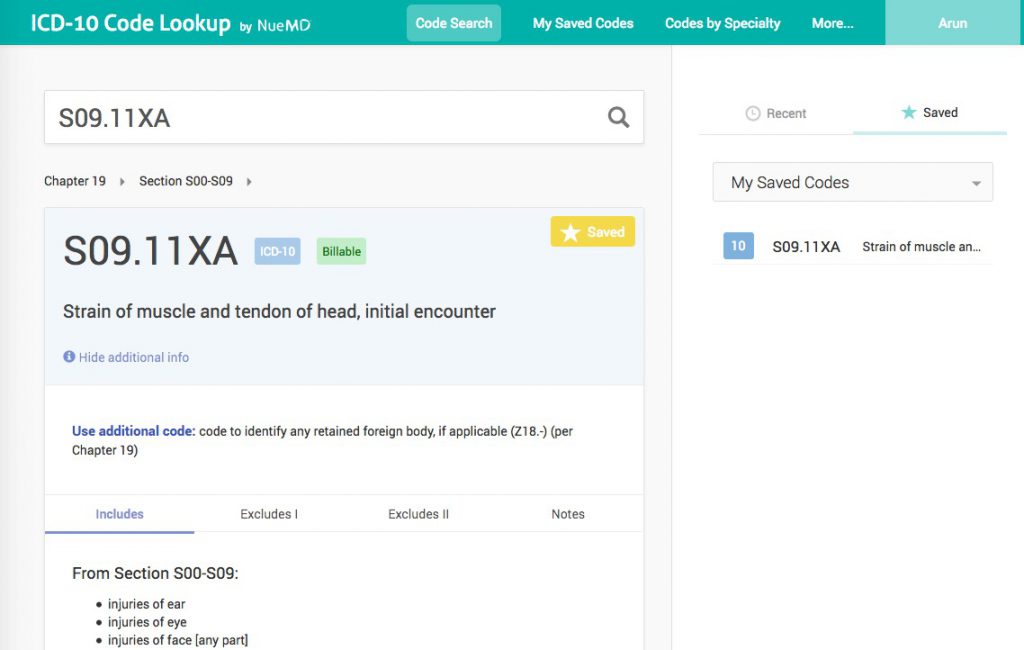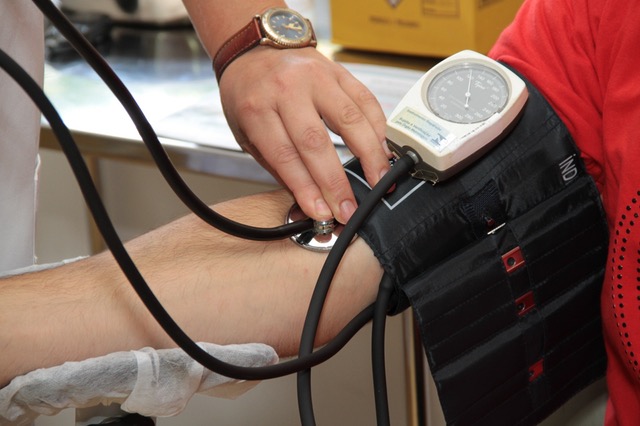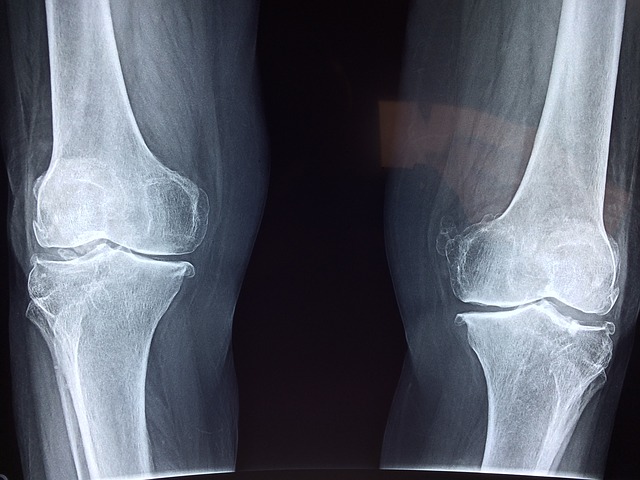Check out our PowerPoint slideshow on using data crunching technology to improve workers’ compensation.
Top 5 Articles of 2016
From how to use an inclinometer correctly to understanding why a panel QME gets involved in a work injury, read up on the best workers’ compensation content of the past year.
- What’s A QME?
- Muscle Atrophy
- Exacerbation vs. Aggravation
- Activities of Daily Living
- How to use an Inclinometer
Do you have a workers’ compensation topic you’d like to see covered? Email us and we’ll put our best people on it!
Automated Impairment Rating: The Science Behind RateFast
RateFast automates the impairment rating process, giving providers and injured workers the ability to generate accurate analyses of occupational injuries based on the AMA Guides to Impairment Rating.
But how is it done?
Listen to the podcast or keep reading to discover how CPA Josh Moore applies knowledge from accounting to the development of the RateFast impairment rating system.
Continue reading Automated Impairment Rating: The Science Behind RateFast
NueMD ICD-10 Code Lookup Tool
If part of your workflow involves looking up ICD-10 codes, you should check out NueMD’s ICD-10 Code Lookup tool.
This might be old news if you’re in the coding business, as the website is actually ranked #1 in Google’s search results when you search “icd-10 code lookup tool.”
It’s easy to see why. NueMD’s code lookup tool sports a clean interface and modern features that are geared toward engaging and keeping users.
When you create a free account, you can save your favorite codes in your own personal categories.

Other bells and whistles that are not often featured on other web-based coding tools include training in the form of several coding games, and the ability to search for common codes by your specialty—dermatology, infectious disease, podiatry, and others.
NueMD allows you to find codes by common abbreviations and keywords, giving it clear leg up when compared with one-way code search sites such as www.icd10codesearch.com/. NueMD’s site is also less cluttered and less spammy than other tools like www.findacode.com.
The actual content about each code seems comparable to the code information provided by other services. I’m not a professional biller, but I didn’t notice any significant differences between NueMD and www.icd10data.com for the codes that I searched. However, NueMD has clearly put effort into making their tool stand out.
Conclusion
If you ever need to lookup codes online, NueMD’s app is worth a whirl. It has features and design-values that billers and other professionals in medicine should demand from their software.
Have you used NueMD’s ICD-10 code search tool? What was your experience? Do you have a different favorite tool for looking up codes? Let us know. Contact us by email or on social media.
How RateFast Benefits Your Medical Practice
When most medical professionals think of workers’ compensation, the terms “painless,” “fast,” and “easy” do not leap to mind.
However, we believe that the problems associated with workers’ compensation cases can be solved.
RateFast is a cloud-based application that makes workers’ compensation fast, easy, and lucrative for California providers.
While physicians and staff focus on patients, RateFast handles the dirty-work.
Here are just a few ways that RateFast saves your medical practice time:
- When you use RateFast, you don’t need to do any dictation or take any notes. All data is quickly entered into RateFast.
- You don’t even need to write the report. As you check boxes and answer simple questions, your Doctor’s First, PR-2, and PR-4 reports are automatically filled out and formatted.
- You don’t need to fill out RFAs. The app automatically generates and organizes Requests for Authorization forms as you order treatments.
- You don’t need to write work status notes. Faxable work status notes are automatically generated as you answer questions about the patient.
- You don’t need to calculate an impairment rating. The system prompts you to ask all questions that are relevant to the patient’s whole person impairment. Then, the system calculates an accurate and fully justifiable impairment rating using proprietary algorithms that are rooted in the AMA Guides 5th Edition.
The bottom line: if you’re a California medical provider or work in a California medical clinic, we believe you can benefit from RateFast.
No installations. No downloads. No obligation. No risk. Free training and support.
Sound too good to be true? Try it for yourself. Join for free.
All you need is an email address and a desire to improve the California workers’ compensation system.
If you join before the end of January 2017, you will even receive a 50% discount on all reports for the next six months!
To learn more from a sales representative, contact us at sales@rate-fast.com.
The Art of the Qualified Medical Exam
A QME is a medical professional who is credentialed by the state to perform qualified medical examinations required for certain workers’ compensation cases. For a more detailed look at what a QME is, take a look at this article.
Recently on the RateFast Work Comp Report podcast we interviewed Dr. Nissen about being a Qualified Medical Examiner (QME). Dr. Nissen discussed what he called “the art of the QME”—a skillset that involves using creativity and critical thinking to overcome several unique challenges.
A few of these challenges are described below.
Understanding the American Medical Association Guide to Impairment Rating and Evaluation.
Using the huge tome commonly known as the AMA Guides demands a depth-of-knowledge that few physicians take the time to develop. In order to serve as an effective impartial examiner, the QME is responsible for knowing the Guides back-to-front. This knowledge directly informs all other aspects of QME’s work with the claim, from performing the physical exam to determining impairment.
Assessing previous medical charts.
Medical charts for a single patient are often hundreds of pages long, and the ability to review them for relevant information takes practice, insight, and real-time analysis.
Performing an accurate physical evaluation.
The QME evaluates the patient according to the Guides, reviewing all thirty-four activities of daily living, and taking repeated measurements depending on the type of injury. A correct evaluation requires extensive knowledge of the Guides and rigorous attention to detail.
Creating a precise and correct impairment rating.
All of the relevant medical charts and all new information generated by the QME’s physical exam must be collected into the QME’s report. This data must be accurate; after all, the QME’s role is to bring objectivity to the claim, so reproducibility of results is key.
Conclusion
Dr. Nissen argues that in order for QME reports to truly benefit injured workers, physicians need a system for collecting consistent data. Accurate and meaningful data results in less legation, and ultimately the speedy close of the workers’ compensation claim.
Fortunately, such a system has been developed. RateFast is a total workers’ compensation solution that helps providers perform perfect exams, document patient medical histories, format and organize reports, and determine impairment ratings according to the AMA Guides. We urge medical providers, QMEs, and anyone who is interested in improving workers’ compensation to join RateFast for free.
Is incomplete data affecting the accuracy of your impairment rating?
This article is for medical providers, insurance adjusters, attorneys, and injured workers who want to understand common causes of inaccurate impairment ratings.
Correct impairment ratings save time and money for all stakeholders; they result in correct apportionment for subsequent claims, and allow predictable trends and costs for data analysis and work risk assessment. Of course, the inverse is also true: inaccurate impairment ratings cause claims to consume the time and resources of everybody involved.
One of the best things you can do to check the accuracy of an impairment rating is to make sure that you’re working with a complete data set. In other words, make sure that the provider—or whoever is doing the impairment rating—has all the necessary information.
A complete data set supports an accurate rating, which decreases the risk that the rating will be contested, which means a faster, easier workers compensation claim for all parties.
So why don’t all workers’ compensation claims have complete data? Here are three common circumstances that lead to incomplete data sets:
- Sometimes the required information is not obvious. This is especially common in cases involving the spine with patient symptoms such as radiculopathy.
- The importance of some data about the injury isn’t always clear to medical providers, so they don’t ask the necessary questions or take the necessary measurements. For example, if an employee has injured her left shoulder, then the provider might not ask detailed questions about the pre-existing history of the right shoulder. However, for upper extremity injuries, the history of the uninjured side of the body can actually affect the impairment rating of the injured body part.
- A stakeholder might omit data in order to intentionally increase or decrease the impairment rating. This is considered fraud by the state of California, which you can read more about here.
Let’s look at an example. A twenty-year-old old delivery driver has a back injury. When she reaches maximal medical improvement, a provider examines her. She is pain free and takes no medication, has no problems with her activities of daily living, and takes no medications. It seems as though her injury has not impacted the employee at all, and so the provider concludes that there are no ratable findings. The provider skips the medical history and assigns the patient a 0% whole person impairment. Is this correct?
No. The rating assessment was incomplete. If the provider had taken the full history, then they might have discovered that the patient had L3 dermatomal sensory loss directly after the injury, with imaging showing a concordant herniated disk at that level. Although there were no ratable findings at the time of the final exam, the AMA Guides 5th edition mandates a 5% whole person impairment because she had radiculopathy, even though it is now gone (Category II, Table 15-3, Page 384).
However, only providers who are intimately familiar with the AMA Guides will check for radiculopathy.
In summary, incomplete data are more common than you think. For this reason, we recommend using a tool such as RateFast to ensure that all the relevant questions are answered. Get your free account today.
What does 0% WPI really mean?
Whether you’re a medical provider, an injured worker, a claims adjuster, or an attorney, this article is relevant to you if you’ve encountered a 0% whole person impairment rating in a California PR-4 or QME report.
If you receive a report—or are writing a report—with 0% WPI (whole person impairment), this number should raise some flags.
Why?
Because, when it comes to the AMA Guides and impairment rating, a 0% WPI is a very special number.
If a report claims that a patient has 0% impairment, then it needs to meet some specific requirements. If it doesn’t meet those requirements, then the number is inaccurate—and as we all know, an inaccurate impairment rating can lead to unnecessary delay, litigation, and expense for all stakeholders.
3 Critical Questions to Ask About your Qualified Medical Exam
This is article is meant for injured workers’, medical providers, qualified medical examiners (QMEs), insurance adjusters, and other stakeholders in a California workers’ compensation claim.
When a medical condition has reached Maximal Medical Improvement (MMI), the QME (Qualified Medical Examiner) is required to perform an impairment rating exam.
The impairment exam consists of a series of detailed questions and measurements defined by California law and the American Medical Association (AMA) Guides, 5th Edition.
An accurate and correct impairment exam leads to faster settlement and delivery of benefits, whereas an incorrect exam leads to delay, confusion, and or costly litigation.
As a stakeholder in the system, here are three simple questions you should ask in order to determine the accuracy of your orthopedic medical exam.
Continue reading 3 Critical Questions to Ask About your Qualified Medical Exam
Definitions: Orthopedic Injury
An orthopedic injury is an injury affecting the spine, upper or lower extremity. It may be an injury that affects joint motion, muscle strength, or nerve function (sensory pain, or strength).
Check out the transcription of our podcast, where we interviewed Dr. Athanassious about what an orthopedic injury might mean for a doctor and a patient.






